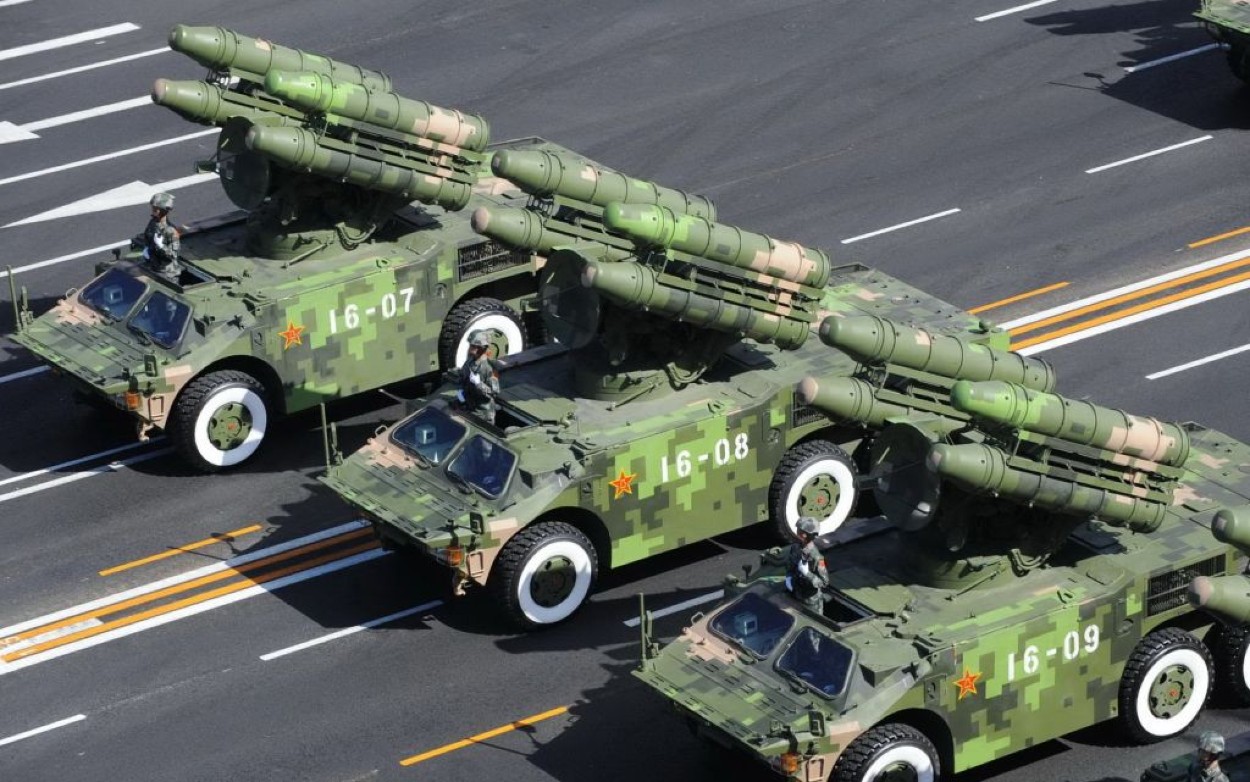The biggest takeaway for China from the Russia-Ukraine war is the ability to maintain logistics, supply troops with weapons and ammunition, and keep the defense industrial capability in case operations go beyond a few months.
The lesson will be vital during a military operation on Taiwan, where the island has been domestically up-arming itself and receiving steady military supplies from the US.
Analysts at the RAND Corporation have drawn this conclusion after studying Russia’s military, strategic, and economic aspects of the war and drawing inferences from military developments in the People’s Republic of China.
The PLA, which has been observed to lack combat experience, has also been assessed by experts to compensate by ‘observational experience,’ rigorously studying other wars and conflicts.
In theory, such an approach should cater to all conceivable contingencies at the strategic and political level, automatically allowing room for adjustment at the tactical, operational dimensions.
A Taiwan scenario, in particular, is a massive logistical undertaking of transporting thousands of troops and war wares across the Taiwan Strait. Previous EurAsian Times analyses have noted how the drills around the island became staggeringly specific, concerted, and comprehensive following the August 2022 of former US Speaker Nancy Pelosi.
They cover all aspects of a massive military takeover, including naval and aerial encirclement, blockade, and the ability to mount an amphibious landing and bloody urban warfare if needed.
Publicity material from Chinese state media showing the military option for Taiwan being prepared more exhaustively suggests it cannot be uninfluenced by current lessons from the war in Ukraine.
‘Russia’s Poor Logistics’
The RAND article references a Chinese defense magazine column that studies Russia’s Special Military Operation (SMO). It criticized “a poorly performing offensive caused by logistical issues”; the Russian military leadership “underestimating” the Ukrainian army, assuming a “quick victory” and “failing” plan “adequate logistical support” with “insufficient supplies of equipment and ammunition.”
The article focused on how quickly both sides expended all types of munitions in the war. “Initially, the Russian army carried out large-scale strikes using precision-guided munitions. By the second phase, the Russian army’s precision-guided munitions were in short supply.
This led to more unguided artillery shells, rockets, and tactical missiles from the ground forces. The Russian military’s long-range strike capability was severely constrained,” it said.
PLA planners are, therefore, “understanding that military conflicts often go on longer than initially anticipated. Zhao DaShuai, an official handle of the People’s Armed Police (PAP) Propaganda Bureau, agrees with this assessment. Speaking to EurAsian Times, he said, “The PLA’s primary lesson “is, don’t start without carefully preparing and stockpiling munitions and resources.”
The need to have a large ammunition stockpile also figures in both Indian and Western military issues. New Delhi has been to raise its War Wastage Reserve (WWR) to fifteen days of intense fighting. In 2017, the Comptroller and Auditor General (CAG) found an alarming shortage in the WWRs of “critical ammunition” that could last between 20 to 40 days of war.
Meanwhile, the US and its European North Atlantic Treaty Organization (NATO) allies are struggling with critical ammunition shortages in artillery rounds, particularly those of 155-mm caliber, owing to having donated them to Ukraine from their ordnance stockpiles.
Efforts to raise production have been complicated because of the lack of investment in the defense industrial base over the last two decades. The nations fought non-state actors that did not require conventional military strength and technology. In contrast, efforts to set up new factories and raise the production capacities of both private and government-owned military factories take time.

Russia Chose ‘Long War’ To Prepare & Learn from Mistakes
However, statements from Russia’s military and strategic leadership since the start indicate that they anticipated these problems and chose to correct them as they went along instead of waiting to prepare, which would have been time-consuming.
They consistently stated, since launching the Special Military Operation (SMO) in February 2022, that the war had “no timeline” and that the operation would be conducted in “phases.”
This implies that Russian planners predicted that the industrial, economic, and logistical elements would take time to synergize and streamline, reflected in its ‘long war’ doctrine, touched upon in this EurAsian Times analysis.
In other words, China and Russia’s driving philosophy is that the capability to fight for a more prolonged, protracted time can also allow a state to fight short wars, but not the other way around.
Lastly, the article also touched upon Russia’s long, vulnerable supply lines that were “harassed by the Ukrainian army” that employed “small-scale targeted strikes to destroy the bridges and rail lines (and) supply routes in the rear areas.”
EurAsian Times had noted how the Russian withdrawal from Kherson in November 2022 was meant to shorten its frontline, and changes in its artillery employment two months ago suggested it had addressed its logistical issues.
For China, the logistical issues are more maritime and naval-centric, which it appears to be addressing by operationalizing its Type 075 Landing Helicopter Dock (LHD) amphibious ships, a massive fleet of civilian Roll-On/Roll-Over (RoRo) to have additional sealift capacity and being able to exercise now even off Taiwan’s eastern coast.
- The author can be reached at satamp@gmail.com
- Follow EurAsian Times on Google News




